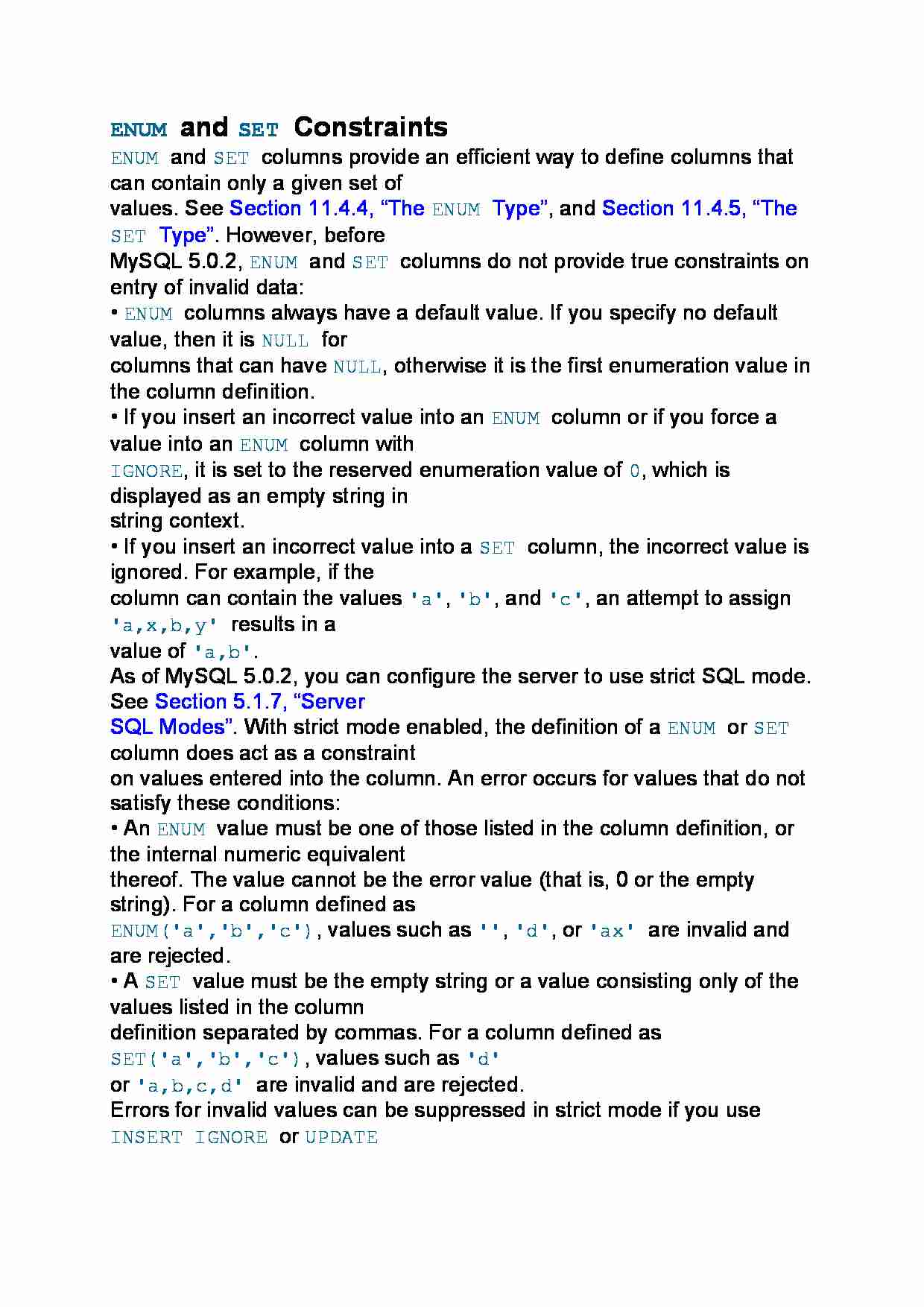To tylko jedna z 2 stron tej notatki. Zaloguj się aby zobaczyć ten dokument.
Zobacz
całą notatkę


ENUM and SET Constraints
ENUM and SET columns provide an efficient way to define columns that can contain only a given set of
values. See Section 11.4.4, “The ENUM Type”, and Section 11.4.5, “The SET Type”. However, before
MySQL 5.0.2, ENUM and SET columns do not provide true constraints on entry of invalid data:
• ENUM columns always have a default value. If you specify no default value, then it is NULL for
columns that can have NULL, otherwise it is the first enumeration value in the column definition.
• If you insert an incorrect value into an ENUM column or if you force a value into an ENUM column with
IGNORE, it is set to the reserved enumeration value of 0, which is displayed as an empty string in
string context.
• If you insert an incorrect value into a SET column, the incorrect value is ignored. For example, if the
column can contain the values 'a', 'b', and 'c', an attempt to assign 'a,x,b,y' results in a
value of 'a,b'.
As of MySQL 5.0.2, you can configure the server to use strict SQL mode. See Section 5.1.7, “Server
SQL Modes”. With strict mode enabled, the definition of a ENUM or SET column does act as a constraint
on values entered into the column. An error occurs for values that do not satisfy these conditions:
• An ENUM value must be one of those listed in the column definition, or the internal numeric equivalent
thereof. The value cannot be the error value (that is, 0 or the empty string). For a column defined as
ENUM('a','b','c'), values such as '', 'd', or 'ax' are invalid and are rejected.
• A SET value must be the empty string or a value consisting only of the values listed in the column
definition separated by commas. For a column defined as SET('a','b','c'), values such as 'd'
or 'a,b,c,d' are invalid and are rejected.
Errors for invalid values can be suppressed in strict mode if you use INSERT IGNORE or UPDATE
IGNORE. In this case, a warning is generated rather than an error. For ENUM, the value is inserted as
the error member (0). For SET, the value is inserted as given except that any invalid substrings are
deleted. For example, 'a,x,b,y' results in a value of 'a,b'.
... zobacz całą notatkę




Komentarze użytkowników (0)